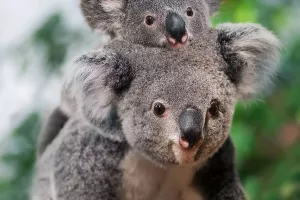Swan refers to the birds of the genus Cygnus. There are 7 species in total, which are swimming birds. It is distributed on all continents except Africa and Antarctica. It is the largest individual group in the duck family. Their mouths are mostly yellow, the tops of their heads are black, and their bodies are white. Their head and neck are very long, accounting for about half of their body length,
The swan is a winter migratory bird that likes to live in flocks of lakes and swamps. Swans mainly feed on the rhizomes and seeds of aquatic plants, and also eat a small amount of aquatic insects, worms, snails and small fish. Mainly distributed in Greenland, northern Europe, northern Asia. During winter they migrate to Central Europe, Central Asia and China to overwinter.
Swans have a strong sense of territory. In our daily life, we can often see reports of swans waving their wings and chasing people, and one of the big reasons is that they love their families very much. They will attack unfamiliar creatures that invade their territory, especially when they are close to their nests, the swans will attack more violently. Because there are not only their loving nests carefully piled up, but also their lovely baby swans. For swans, which are very family-loving animals, once they find a threat, they will definitely resist without hesitation.
The swan is the flying champion among many birds. We all know that Mount Everest, the highest mountain in the world, is too high for most birds to climb, and for swans, flying over Mount Everest is just a matter of ease. Because swans can fly up to nine kilometers high!
The four species of white swans distributed in the northern hemisphere have been known for a long time. Because of the swan's white feathers, graceful posture, moving voice and loyal behavior, the eastern and western cultures developed in Eurasia invariably regard the white swan as a symbol of purity, loyalty and nobility.
Swans still maintain a rare lifelong companionship. They usually come in pairs whether they are feeding or resting. While the female swans are laying eggs, the male swans stand beside them. When encountering an enemy, it flaps its wings to meet the enemy and fight bravely with the opponent. Not only do they help each other during the breeding season, but they also usually come in pairs, and if one swan dies, the other will live alone for life.
There are many descriptions of swans in Western culture. Aristotle's Zoology discusses the habits and behavior of swans, as well as records of swan morphology and anatomy. The book "Greek Birds" has a moving description of the swan's dying call. In the UK, outstanding poets or singers can be compared with swans, for example, Shakespeare's nickname is "Avon's Swan".
There are also images of swans in Western music and literary works. Saint-Saëns' "The Death of the Swan" and Tchaikovsky's dance drama "Swan Lake" all have swan noble and holy images. Andersen used the changes of swan feathers to interpret A touching "The Ugly Duckling". Many artists have created handed down art works with swans as the theme, and there are countless places named after swans around the world!


